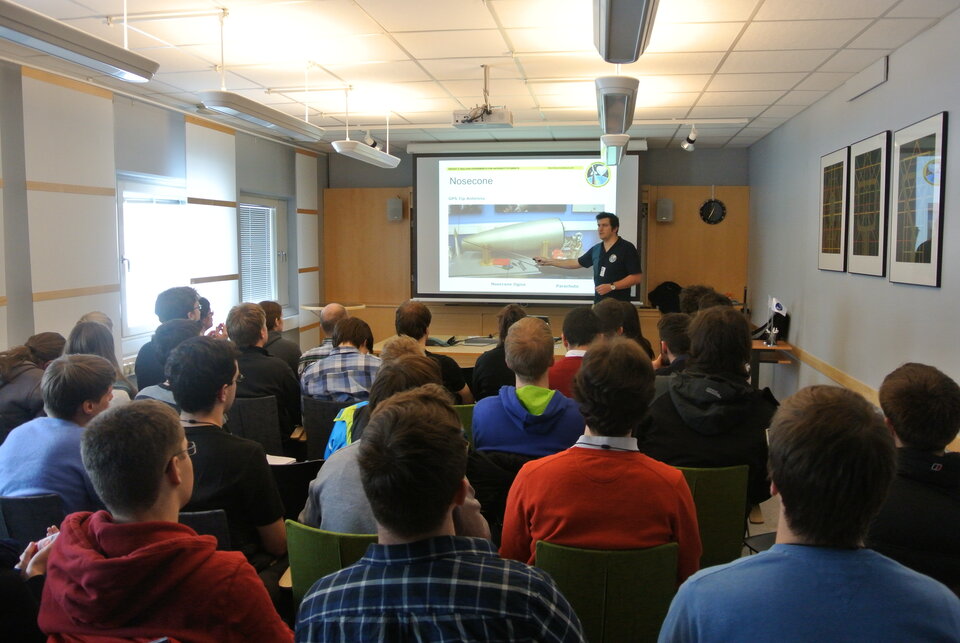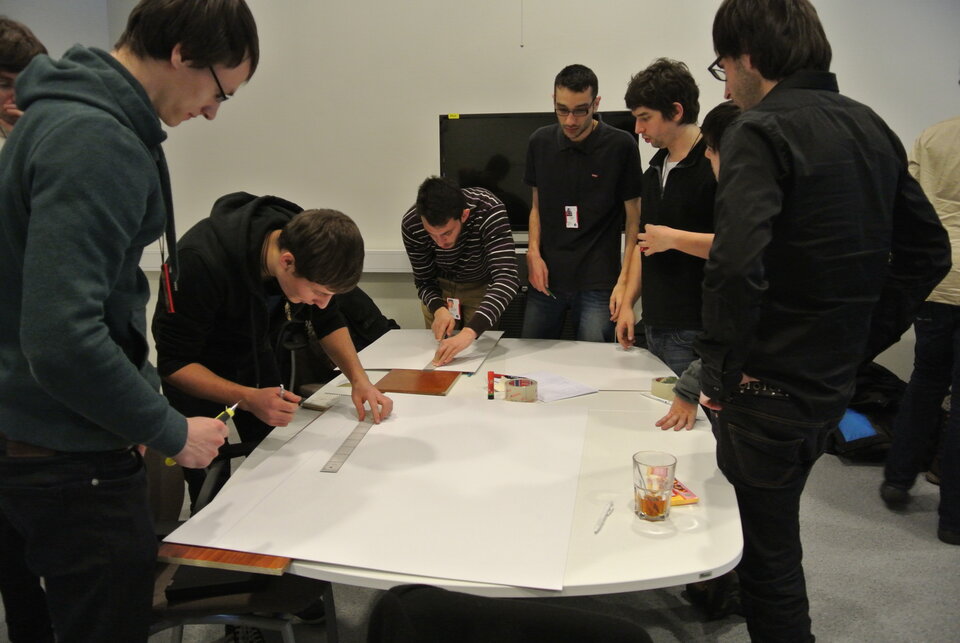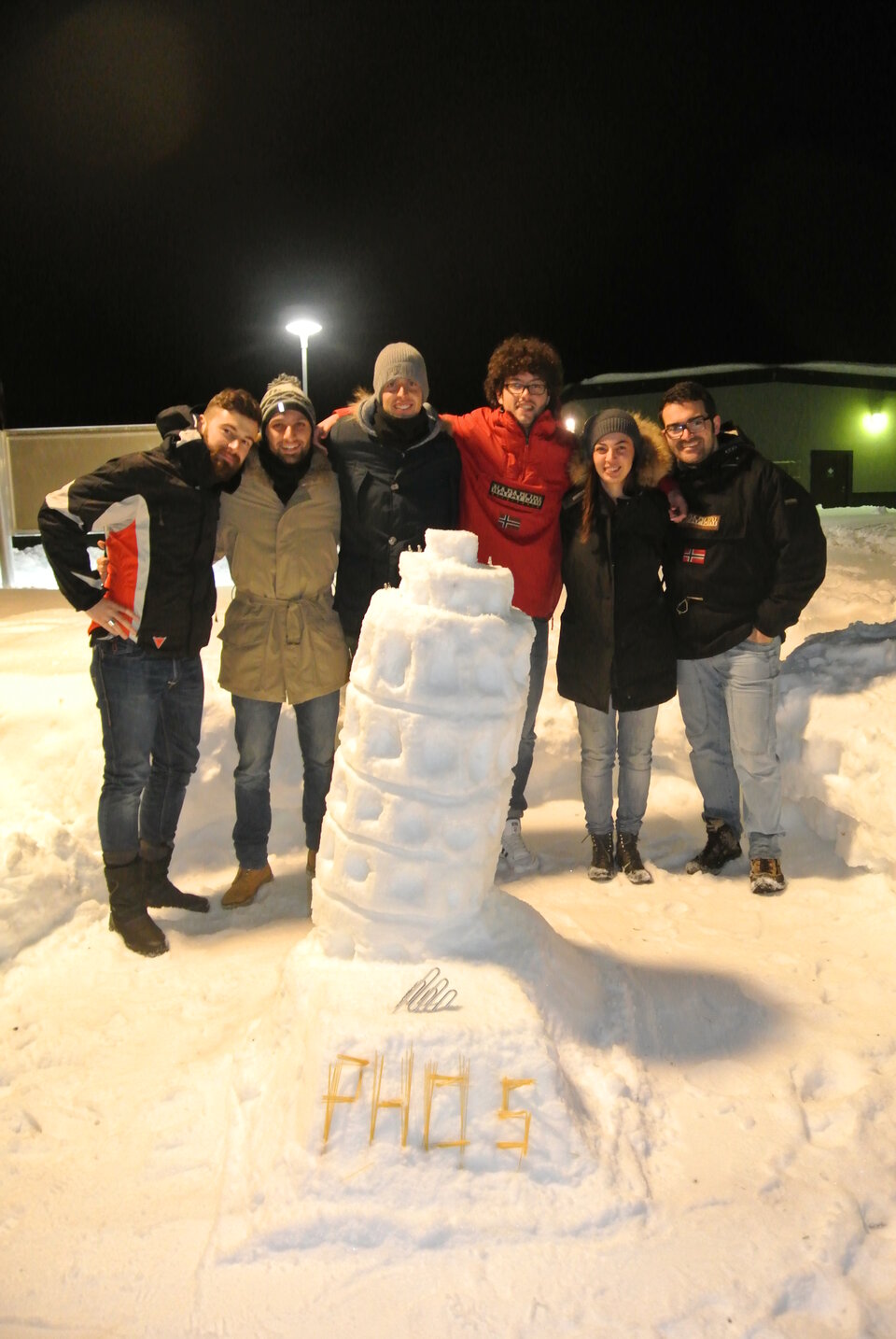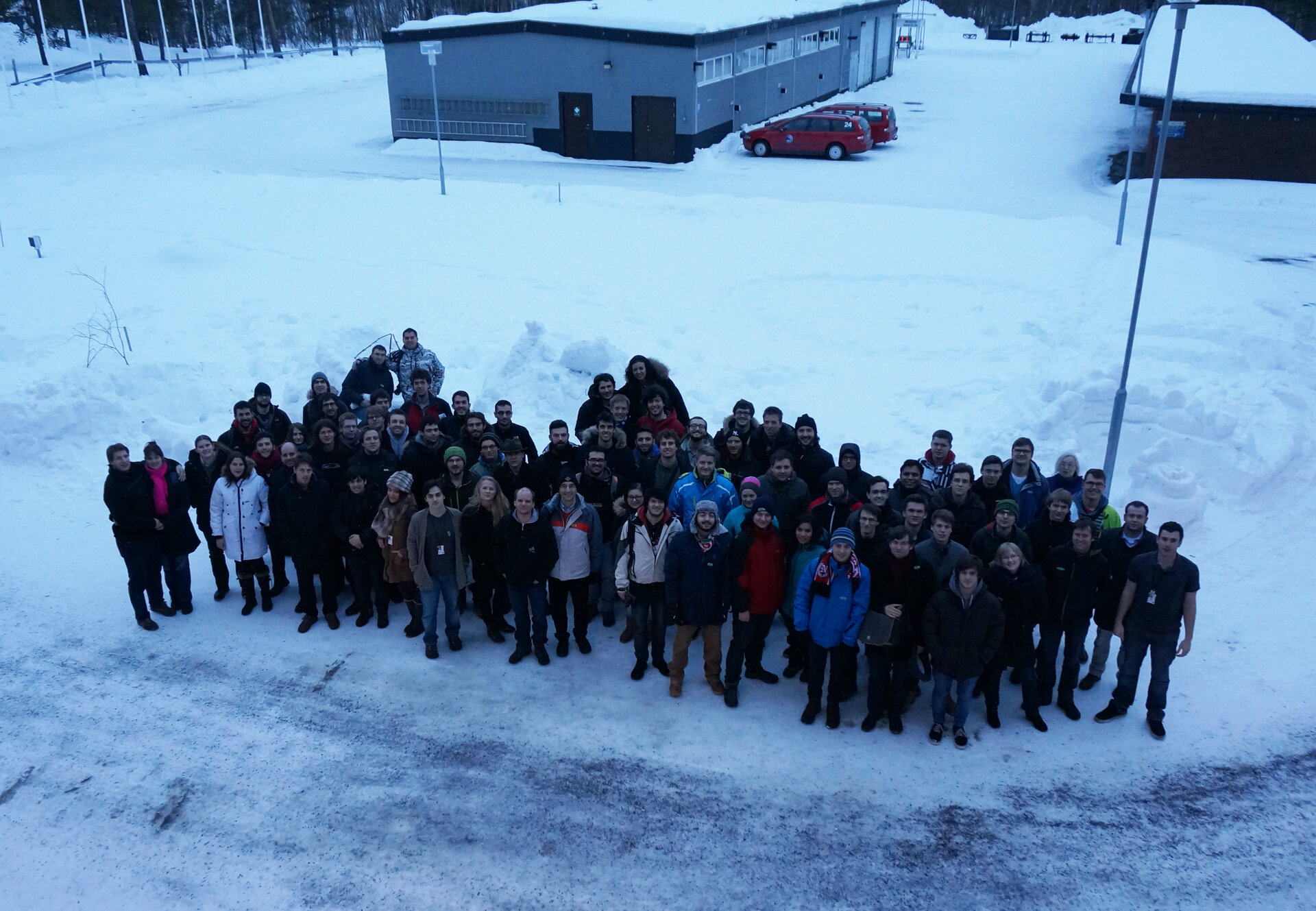Rockets, balloons and snow castles
Eighty-five students have taken part in a training week at the SSC Esrange Space Centre in Kiruna, Sweden. It is from there that they will launch their experiments on high-altitude balloons and sounding rockets later this year and next.
The training week took place between 3-7 March 2014. It was an intensive week that gave the students everything they needed to know in order to design and build successful experiments.
The 85 students belong to 16 teams who were each awarded a place on the BEXUS 18/19 or the REXUS 17/18 launches. REXUS/BEXUS is a German-Swedish programme, in cooperation with ESA. The abbreviation stands for Rocket and Balloon Experiments for University Students. Each year, two rockets and two balloons carry up to 20 university student experiments into the upper reaches of the atmosphere.
The student teams come from 5 ESA member states and 1 cooperating state. ESA and the Swedish National Space Board (SNSB) sponsored 28 students to attend the event; 32 others were sponsored by the German Space Agency (DLR). An additional 25 students were sponsored by other sources.

On Monday the students had lectures about implementation, flight safety and mechanics, project management and outreach as well as Swedish space activities, including Swedish national balloon an rocket programme.
On Tuesday they visited the SSC Esrange facilities and learned about mechanisms, mechanical systems, E-link systems and telemetry.
On Wednesday they heard about thermal and software design, low pressure and vacuum environments, as well as verification of requirements and technical drawing for manufacture. Thursday was about GPS and Power Systems as well as Swedish atmospheric research on balloons and rockets. The students also had the opportunity in some dedicate sessions to ask SSC, DLR, ZARM and ESA experts questions about mechanics and electronics. They also learnt about ESA Education hands-on opportunities for University students.
On Friday students had two last lectures to prepare for the next steps of the programme and a feedback session.
During the week, each of the teams also had to attend a 1.5 hour Preliminary Design Review in which they presented their designs to experts from ESA, DLR, ZARM and SSC. The experts offered help and advice on how best the students could go about completing their designs.

One student commented, “All advice was presented constructively and several experts provided contact details and gave us a significant amount of time to discuss their recommendations in person. We were even shown physical examples of good systems, books to reference and given names other teams to look at who have experience with similar systems.”
The week was not all work. On Monday night the students were challenged to an informal snow castle competition. Each team had 3 hours to build something linked to their project with the snowfall. They produced giant cubesats; radars; rovers; an airplane; scaled-up experimental equipment such as cameras; things the experiments will measure such as aerosols, dust and molecules; as well as 3-D logos. The winning team was PHOS from Pisa, which build a miniature model of the city’s leaning tower, and spelt the team’s name in original spaghetti with a finishing touch of some experiment hardware.
On Friday, at the end of the training, the student visited the mine in Kiruna and the famous ice hotel in Jukkasjärvi, which served as the inspiration for the ice hotel in the James Bond film,Die Another Die.

Now the teams have returned home to complete their designs. These will be assessed at the Critical Design Review (CDR) in the late spring/early summer. Once past the CDR, the teams will build and test their experiments and complete integration and acceptance reviews before the launch campaigns at the SSC Esrange Space Centre in Sweden.
The students preparing experiments for BEXUS 18/19 will fly in autumn 2014. REXUS 17/18 will fly in spring 2015. The REXUS rocket reaches around 75-90 kilometers in altitude, and the experiments can experience up to 2 minutes of miligravity. The BEXUS balloons ascending to around 25-30 kilometers and staying in the stratosphere for 2-5 hours.
Upon leaving, one student summed up the event like this: “Everything was good. Students, experts, place, organization. Good Work!!!”
* * * *
Notes for editors
The REXUS/BEXUS programme is realised under a bilateral Agency Agreement between the German Aerospace Center (DLR) and the Swedish National Space Board (SNSB). The Swedish share of the payload has been made available to students from other European countries through a collaboration with the European Space Agency (ESA). EuroLaunch, a cooperation between the Esrange Space Center of SSC and the Mobile Rocket Base (MORABA) of DLR, is responsible for the campaign management and operations of the launch vehicles. Experts from DLR, SSC, ZARM and ESA provide technical support to the student teams throughout the project.




